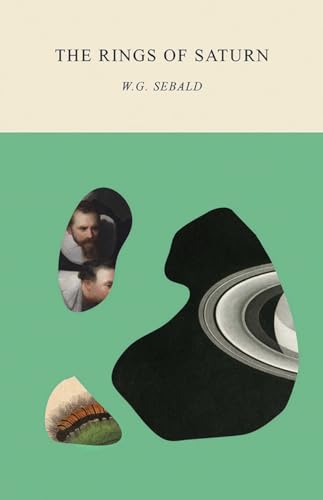I watched the shadow of our plane hastening below us across hedges and fences, rows of poplars and canals. Along a line that seemed to have been drawn with a ruler a tractor crawled through a field of stubble, dividing it into one lighter and one darker half. Nowhere, however, was a single human to be seen. No matter whether one is flying over Newfoundland or the sea of lights that stretches from Boston to Philadelphia after nightfall, over the Arabian deserts which gleam like mother-of-pearl, over the Ruhr or the city of Frankfurt, it is as though there were no people, only the things they have made and in which they are hiding. One sees the places where they live and the roads that link them, one sees the smoke rising from their houses and factories, one sees the vehicles in which they sit, but one sees not the people themselves. And yet they are present everywhere upon the face of the earth, extending their dominion by the hour, moving around the honeycombs of towering buildings and tied into networks of a complexity that goes far beyond the power of any one individual to imagine, from the thousands of hoists and winches that one worked the South African diamond mines to the floors of today's stock and commodity exchanges, through which the global tides of information flow without cease. If we view ourselves from a great height, it is frightening to realize how little we know about our species, our purpose and our end, I thought, as we crossed the coastline and flew out over the jelly-green sea.
W. G. Sebald's The Rings of Saturn records, on its face, a walking tour of the Suffolk coast. The narrator--who is, at the very least, a version of Sebald himself--has recently been released from the hospital, and the trip, perhaps will bring him back to himself. The tarnished inns, the empty towns, the featureless coast, these things are only a small part of what is recorded on the page, however. As Sebald walks, his mind wanders to various topics, mostly historical in nature: the life of Joseph Conrad or Edward FitzGerald, the history of Rembrandt's The Anatomy Lesson, the cultivation of silkworms, the life cycle of commercial herring, the machinations of the Dowager Empress of China. These accounts, which are too thoroughly researched to convincingly represent sudden flights of the mind, are only lightly connected to any inciting detail; often they seem to drift in from nowhere, like an afternoon shower.
The thematic connection between these stories, if there really is one at all, seems to be a meditation on time and change. Sometimes this is quite explicit, as when Sebald, passing the town of Dunwich, reflects on how it used to be a busy port town until, buffeted by disastrous storms during the middle ages, it was moved inland. On his tour he walks through abandoned estates and over places that have disappeared into the earth, and the relationship between himself and what has vanished seems both vital and elusive. "Whenever a shift in our spiritual life occurs and fragments such as these surface," Sebald writes, "we believe we can remember. But in reality, of course, memory fails us. Too many buildings have fallen down, too much rubble has been heaped up, the moraines and deposits are insuperable."
Sebald's memories--a strange word, because they are so impersonal, but they partake, perhaps, in a kind of historical or social memory--resemble attempts to dredge the past up from the "moraines and deposits," but these attempts, we know, are futile. Sebald describes a friend who, for decades, has been attempting to create an accurate model of the Temple of Jerusalem, but whose effort keeps being amended because of new discoveries and research: "In the final analysis, our entire work is based on nothing but ideas, ideas which change over the years and which time and again cause one to tear down what one had thought to be finished, and begin again from scratch."
What is being torn down and built again here? Is it Sebald himself, having just come out of the hospital? If so, he seems so strangely aloof as a narrator, much more comfortable describing a train built for the Emperor of China than his own breakfast. Little by little, Sebald does return to the story, as when he visits an aged friend who, like Sebald himself, moved from Germany to England to escape the Nazi regime. Themes of exile are all over The Rings of Saturn, and the pressure exile puts on the exercise of memory cannot be overstated, the building of the self from a conspicuous absence. More often, the intersection of Sebald's stories with himself comes in ways that are light, surprising, oblique: the master dyer Seybolt, for example, who we are told served as the Keeper of the Silkworms for the Duchy of Bavaria and who must be Sebald's ancestor. What does this knowledge do for Sebald? What can it do for any of us? Where do we go to know ourselves, when observation, experience, and memory are all insufficient?
The Rings of Saturn is one of those books that is remarkable for being simultaneously so ordinary and so strange. Its muted tone and lack of narrative must certainly frustrated a reader who picks the novel up without knowing what they're in for. Like the heaths of Suffolk, its striking aspects are subtle and difficult to put your finger on.


No comments:
Post a Comment